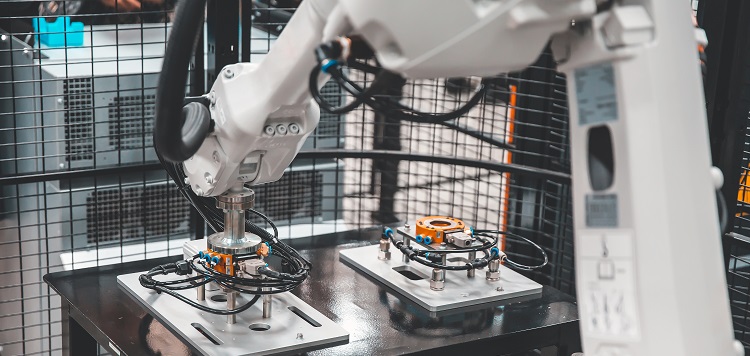Manufacturing facilities are increasingly turning to automation to improve efficiency and productivity. However, with the rise of complex environments and the addition of more robots to the factory floor, keeping operations collision-free and optimized can be a challenge. Realtime Robotics’ RapidPlan motion control and collision avoidance software provides a solution for manufacturers looking to improve productivity in these complex environments. In this article, we will explore how RapidPlan software helped Schaeffler optimize bin-picking operations with multiple robots, resulting in a significant increase in throughput.
Initial goal of the application
Schaeffler, a global supplier of bearings and automotive parts, wanted to optimize its use of robotics by having two robots pick parts from the same bin without colliding. This was a challenging task that required a solution that could accurately control the movement of the robots and prevent collisions in real-time.
Results of the Testing
Realtime Robotics’ RapidPlan software was the solution that Schaeffler turned to. The software was tested in a complex and unpredictable environment, where it was observed that running two separate robots together would dramatically improve the bin-picking time. The software exceeded expectations by improving throughput without significantly complicating the programming layers. Traditionally, to avoid collisions, each robot has to wait for the other one to complete its task before moving into its space. However, with RapidPlan, companies can truly capitalize on maximum productivity by adding additional robots to their application.
Benefits of RapidPlan
One of the primary benefits of RapidPlan is that it allows for more robots to be added to the application while capitalizing on maximum productivity. Most people would think that the addition of a second robot to operations would double throughput. However, in reality, companies typically only see about a 28-30% overall throughput increase. With RapidPlan, Schaeffler was able to improve throughput without significantly complicating the programming layers.
Results for Schaeffler
Schaeffler had set a target of a 60% increase in throughput, but the results far exceeded expectations with an almost double increase in throughput. RapidPlan significantly improved throughput for Schaeffler while eliminating the chance of time-consuming robot collisions. The test results have helped Schaeffler to further optimize its robot cells by adding more robots without slowing down operations.
Robot manufacturer-agnostic software
Another significant advantage of RapidPlan is that it is built to be robot manufacturer-agnostic, meaning that companies can use it to streamline the cell commissioning process. Companies no longer need to worry about compatibility issues with their current robots, as RapidPlan can work with any robot manufacturer.
Simulation capabilities with RapidPlan
Schaeffler used RapidPlan to quickly simulate their robot cells and gain a holistic cell simulation, which made it easy to plan out how the robots would move. Furthermore, they used the same simulation software to develop the real-life robot actions, leading to better and more efficient operations.
Realtime Robotics’ RapidPlan software is a game-changer for manufacturers looking to improve productivity in complex environments. The software optimizes robot movement in real-time while ensuring collision-free operations, leading to a significant increase in throughput. Furthermore, with RapidPlan’s robot manufacturer-agnostic and simulation capabilities, companies can streamline their cell commissioning process and optimize their operations even further. The future of robotics and manufacturing looks bright, and RapidPlan is leading the way.

